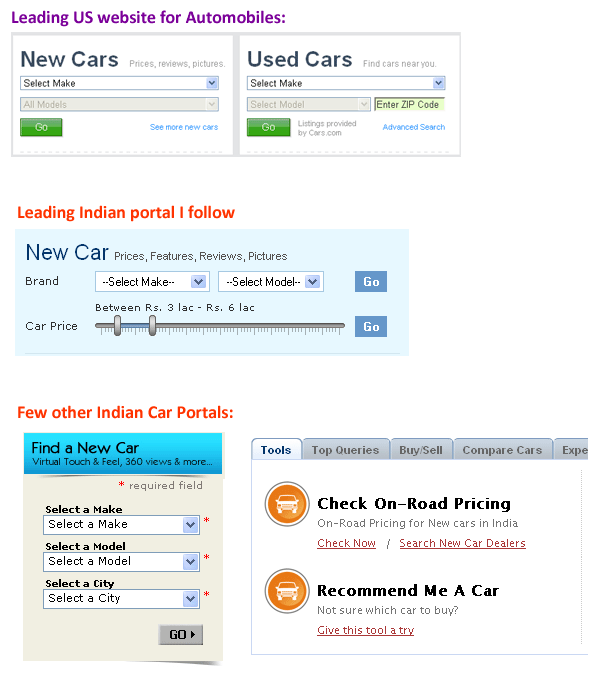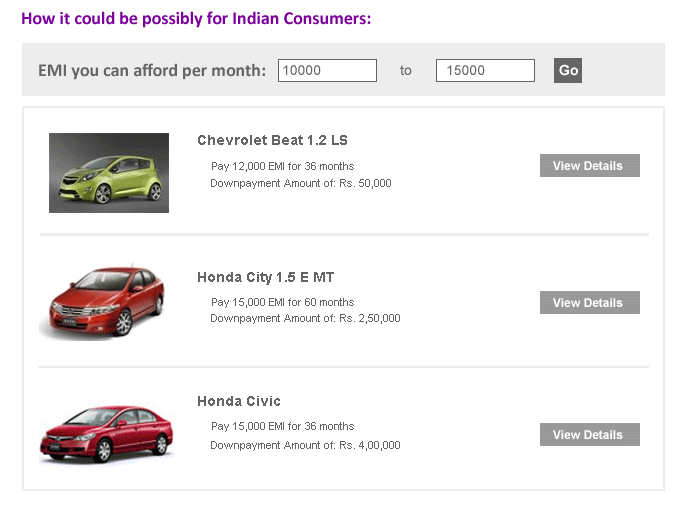Once an VC-favorite business domain in India, Online Travel Agents (OTA) business model has been quite silent since last 2-3 years in this activity. Primarily cause Aviation industry suffered huge losses in this time and most of the plans to expand the aviation businesses in India fell flat post the recession on 2008-2009.
Of course the direct impact of this was on OTAs. Consolidation is expected to take place, naturally since the number of players in market today are probably equal to or more than the number of airlines operating in India. The big 3 of course are Cleartrip, MakeMyTrip & Yatra, however the question is are other players in market big enough or valuable to get acquired or carry any differentiators to be acquired.
Nevertheless, this post is about some number crunching and to answer the question – How big exactly is the OTA market for domestic flights? Taking a reverse approach on this… from Supply to Demand.
>
>
Domestic Airline Fleet in India:
| As of |
Airline |
Fleet |
Flights |
| Dec-09 |
Jet Airways |
89 |
400 |
| Dec-09 |
Jet Lite |
19 |
110 |
| Dec-09 |
Jet Konnect |
19 |
125 |
| Dec-09 |
SpiceJet |
19 |
125 |
| Dec-09 |
Indigo |
24 |
155 |
| Dec-09 |
Kingfisher & Red |
66 |
400 |
| Dec-09 |
Paramount Airlines |
5 |
28 |
| Dec-09 |
Go Air |
8 |
55 |
| Total |
All Private Airlines |
249 |
1398 |
Note:
*indicative data only, gathered from various sources available like company websites, news, etc. Consider all numbers as indicative figures
* Data excludes Air India / Indian Airlines domestic flight operations
* Actual flights per day may be an lower number since most carriers operate multi-destination flights, like Mum-Kolkata-Guwahati
*Jet Airways fleet size may be fleet in service for both domestic/international operations.
>
>
Maximum Tickets Available for Sale:
| Airline |
Flights |
Seats |
Total |
| Jet Airways |
400 |
200 |
80,000 |
| Jet Lite |
110 |
200 |
22,000 |
| Jet Konnect |
125 |
200 |
25,000 |
| SpiceJet |
125 |
200 |
25,000 |
| Indigo |
125 |
200 |
31,000 |
| Kingfisher & Red |
400 |
200 |
80,000 |
| Paramount Airlines |
28 |
60 |
1,680 |
| Go Air |
55 |
200 |
11,000 |
| All Private Airlines |
1398 |
|
275,680 |
Total Tickets available for sale each day = Total Seats available = 275,680
*indicative data only, gathered from various sources available. Consider all numbers as indicative figures
* Actual number of seats available may be lower than mentioned since flights operated may be lower, as mentioned in previous slide
* Most airlines in India operate Airbus/Boeing aircrafts with which seating configuration varying between 180 to 220
* Full service airlines like Jet Airways & Kingfisher operates flight with business class seats, and have ATR aircrafts in fleets as well
* Paramount Airways flies smaller Embraer aircrafts
>
>
PLF – Passenger Load Factor:
Total tickets available for sale, indicates maximum inventory available or max supply From time to time, airlines in India have raised concerns on the occupancy levels of seats, that’s passenger load factor.
Mostly the number has hovered between 68% to 72% for most full service airlines & between 75% to 82% for low cost carriers�. Assuming 75% PLF for India, total sold out tickets in India per day would be: 2,06,760
Total Seats Offered: 275,680
Passenger Load Factor: 75%
Seats sold: 206,760
>
>
Sale Distribution through Different Channels:
Having said that 206,760 tickets are available for sale, lets not assume that all sale happen through online channels. Different channel includes – Offline Travel Agents & Tour Operators, Tickets sold as part of travel packages, Big Corporate Organizations booking tickets for its employees through offline travel partners, Ticket Counters at airports and yes – Online.
Assuming a healthy 40% of all airline ticket sales as online sales. However, consumers in India are price� sensitive and do book directly from �airline’s websites as well.
Doing the division
– Ticket Sales on airline websites = 15%
– Ticket Sales on OTA websites = 25%
Tickets sold by OTAs daily = 51690
>
>
So What are Daily Transactional Sales like?
Total Ticket Sold by all OTAs per day = 51690
Assuming average price of ticket sold online at = Rs. 5000 (not all get a Rs.3000 ticket)
That’s daily sale of Rs. 258,450,000 -> ie. Rs. 25.84 crores
Monthly = 775.2 crores
Yearly= 9062.4 crores
Market size for Indian OTA Industry in Domestic Flights: 9000 crores approximately
On a 5000 INR priced ticket, you pay 2000 INR tax (that’s 40% ). Hence removing the tax factor, the number will be 5400 crores per year
Figures based on assumptions & numbers used in this post.
>
>
Interesting take aways from this dissection…
- this could have been extended to predict profitability of an OTA but has been restricted to predicting the market size only. However it’s a volume game!
- On an average, every aircraft in India does 5.6 flights per day
If airlines could further manage route optimization and do 1 more flight per day, at 6.6 flights per day, OTA Industry Sales will be up by 15%
- If an airline adds one more aircraft to its fleet, OTA business increases by 0.4%
Note that the airlines listed here itself (excluding Air India, Indian Airlines (now part of Air India)) have over 250+ air crafts in orders with Airbus / Boeing and others. This is equivalent to number of aircrafts in operations now. If market conditions remain positive and airlines accept deliveries of these aircrafts over next 5 years, the market size will be double of existing today!
- Nevertheless, Online Booking of Tickets will only increase in coming years. This presentation assumes 40% of ticketing happening online, this percentage share will increase with increase in consumer’s likeness for online transactions. The share of online reservations between airlines & OTAs will be deciding factor.
PS: The flow has many assumptions, however if one has or knows the right numbers – logically the market size can be concluded. I feel the numbers I have taken here are little on higher side.
Thank you 🙂

